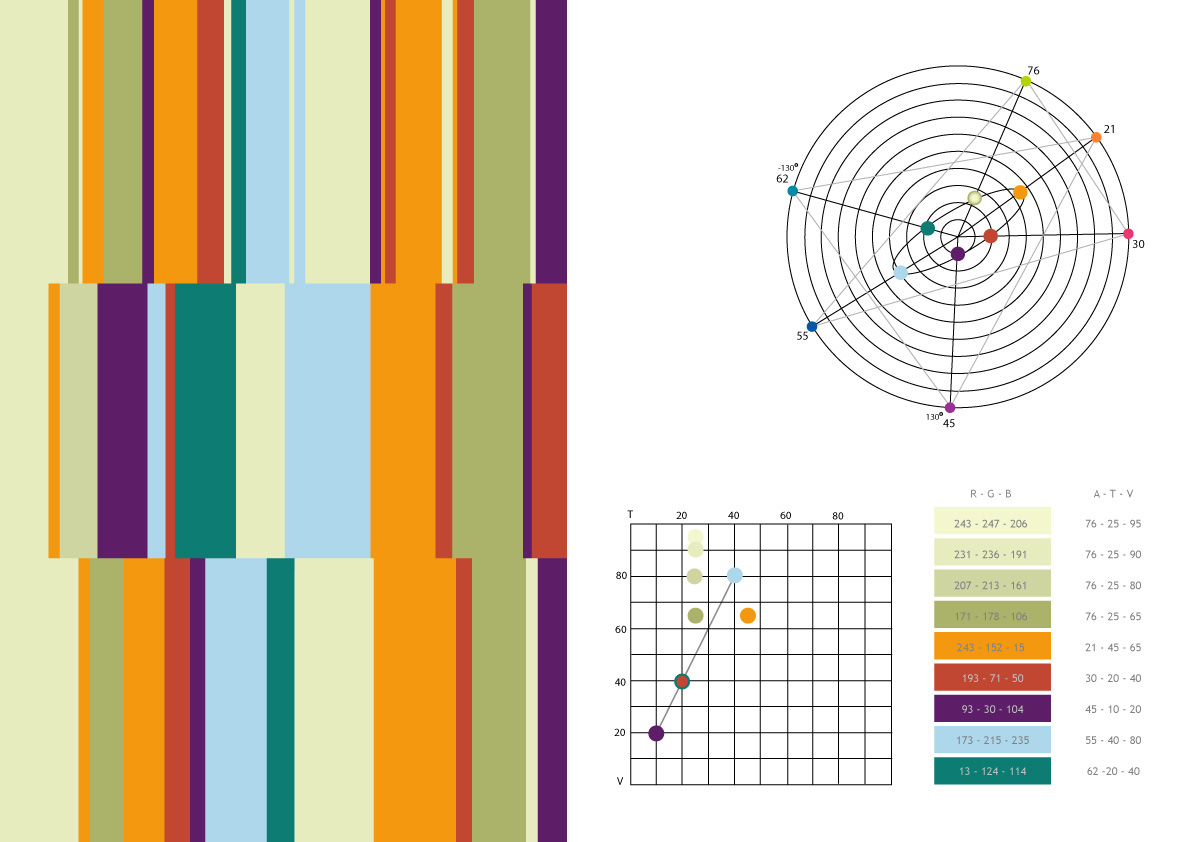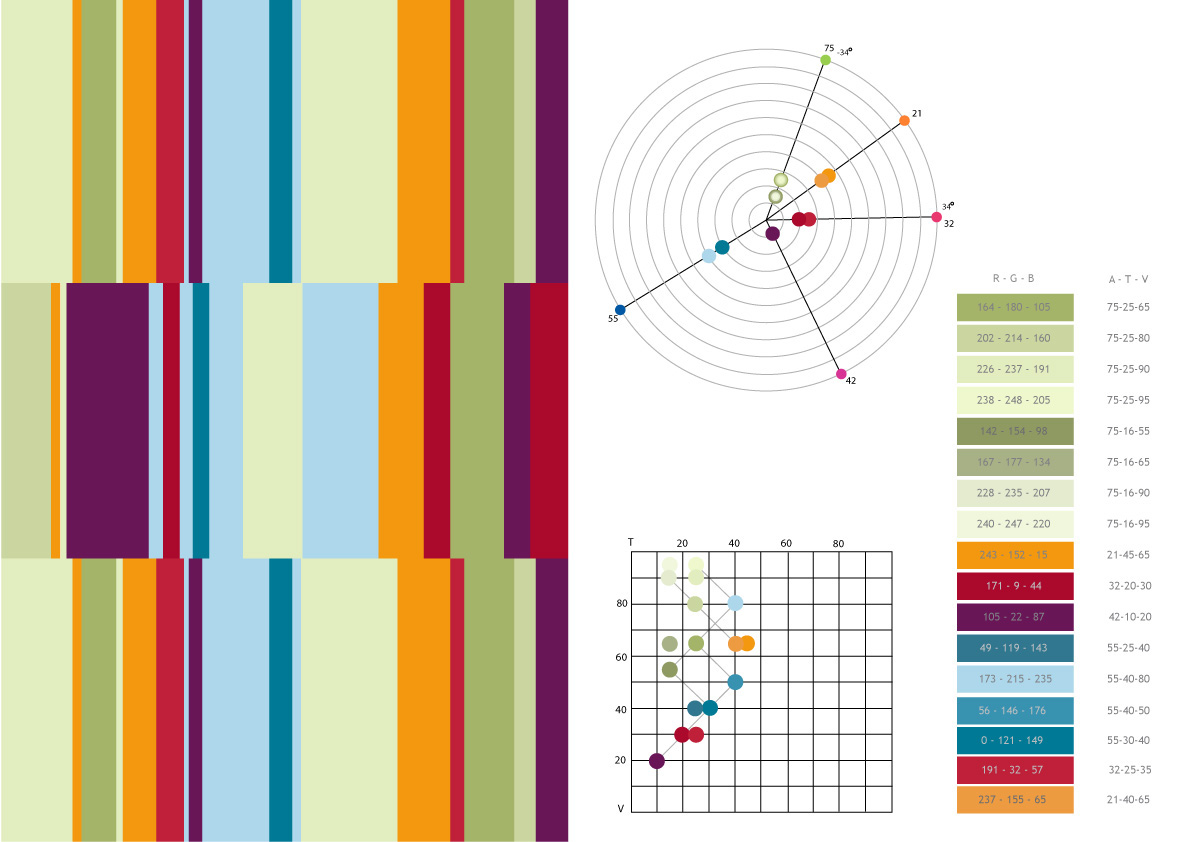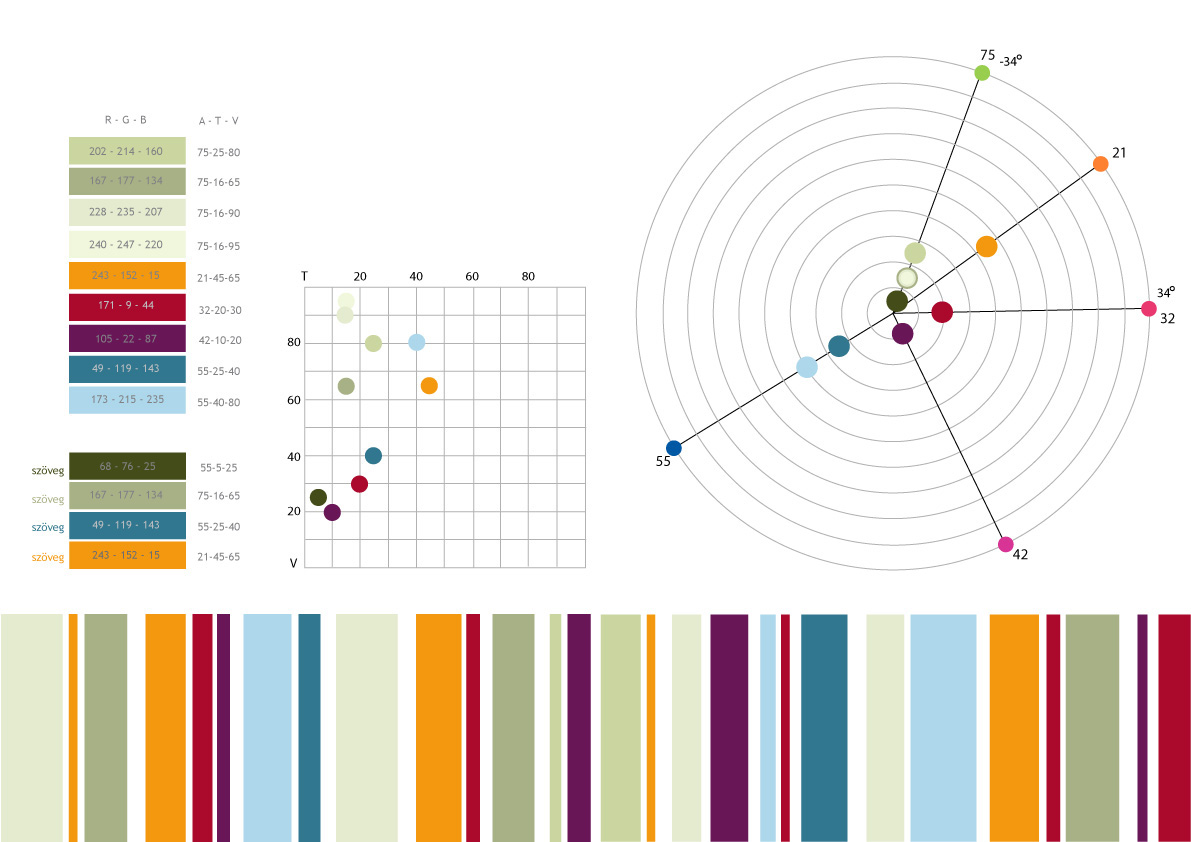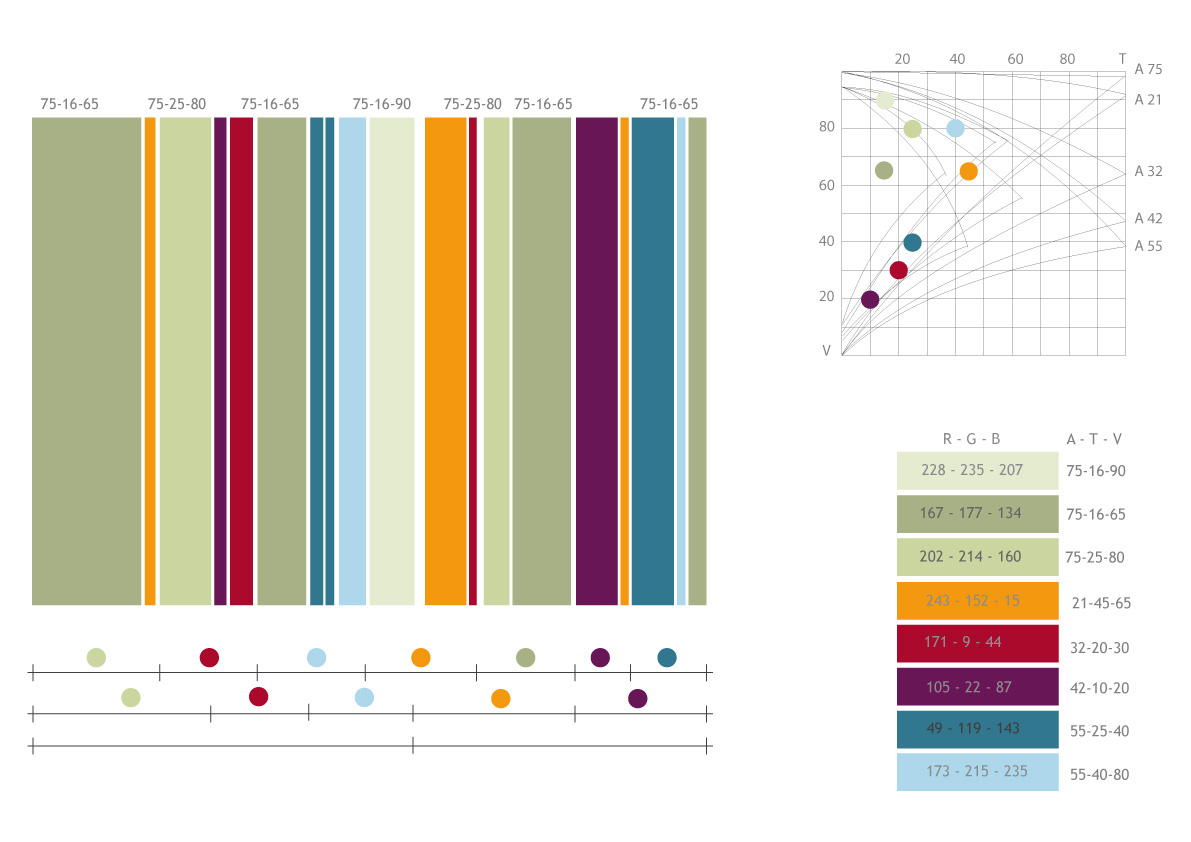Colour dynamics
A study
A study
Process of creating a striped, dynamic and polychromatic composition, based on the Coloroid colour system.
Polychrome 2
The colour combination is based on 6 main colour hues, starting with the orange (A21). 31 degrees to the left we get the green (A76) and 24 degrees to the right is the red (A30). Positioned 130 degrees in both directions there are A62 green and A45 violet. Dynamic tension is supported by the complementary blue (A55). Now the harmonious and yet dynamic relationship between the colours is further developed by placing them (their saturation (T) and luminosity (V) values) in the linear relation with each other, with the A76 greens all having the same saturation value (and thus keeping everything in balance) and the others having their saturation and luminosity both growing diagonally in same intervals.
The colour combination is based on 6 main colour hues, starting with the orange (A21). 31 degrees to the left we get the green (A76) and 24 degrees to the right is the red (A30). Positioned 130 degrees in both directions there are A62 green and A45 violet. Dynamic tension is supported by the complementary blue (A55). Now the harmonious and yet dynamic relationship between the colours is further developed by placing them (their saturation (T) and luminosity (V) values) in the linear relation with each other, with the A76 greens all having the same saturation value (and thus keeping everything in balance) and the others having their saturation and luminosity both growing diagonally in same intervals.

Polychrome 3
In the next variation I further simplified on the colour choice bringing it down to 5 main hues. I omitted the cold green (A62) and replaced the A76 green and A30 red with the A75 and A32, both found 34 degrees to the left and right from the A21. I changed the A45 to a warmer A42 purple. In terms of saturation and luminosity I brought the colour groups closer to each other, strengthening even further their linear relationship. That helped to create a livelier and more harmonious composition. Keeping the levels of saturation lower helped to have a balanced composition and prevented it from becoming too strong or vibrating.
In the next variation I further simplified on the colour choice bringing it down to 5 main hues. I omitted the cold green (A62) and replaced the A76 green and A30 red with the A75 and A32, both found 34 degrees to the left and right from the A21. I changed the A45 to a warmer A42 purple. In terms of saturation and luminosity I brought the colour groups closer to each other, strengthening even further their linear relationship. That helped to create a livelier and more harmonious composition. Keeping the levels of saturation lower helped to have a balanced composition and prevented it from becoming too strong or vibrating.

Final colours

Stripes - the composition
The dynamic, colourful and yet harmonious effect is created with the interplay of the relationship between the contrasting colour fields as well as the simultaneous and proportional contrast.
The dynamic, colourful and yet harmonious effect is created with the interplay of the relationship between the contrasting colour fields as well as the simultaneous and proportional contrast.



